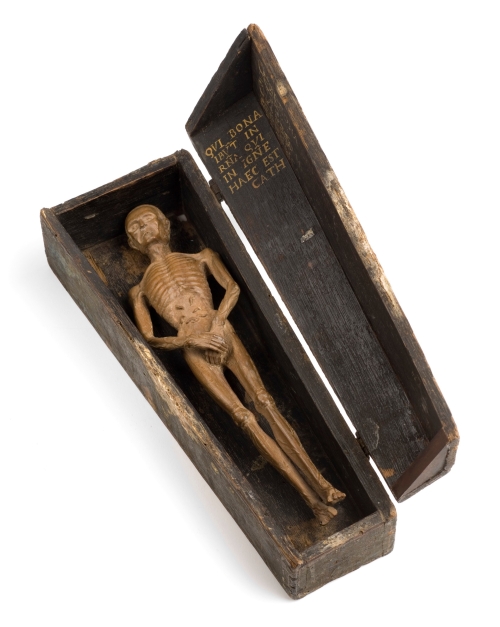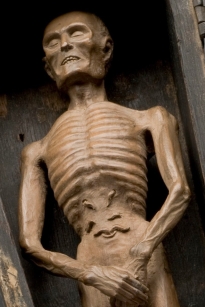From previous posts it’s clear I’m a great fan of Nehemiah Wallington, the puritan wood-turner in London who recorded his inner thoughts and everyday experience in extensive notebooks, made accessible through David Booy’s edited selection. I’m also fascinated by early modern memento mori culture (which is hardly surprising given my PhD was supervised by Nigel Llewellyn, author of The Art of Death).
Memento mori texts, art and objects reminded people of the transience of life and the inevitability of death, as a form of spiritual exercise. As Llewellyn established, this culture was ubiquitous across media and so it occupies a central place in our recent book, A Day at Home in Early Modern England, particularly in chapter 6 focusing on the experience of the chamber at night.
There we discuss Wallington’s investment in memento mori materials. In the year of his marriage, 1621, he notes:
‘I purposed to begin a new life, and I renewed my promises with my God but failed in keepeing of them exceedingly for which I was so perplexed in mind that now I was desirous to die and yet some tims in feare of death[.] So then I was given to bye Books consarning death[:] on[e] booke Learne to Die and death advantage and funarall sarmons, and many such lik book[.]’[1]
As well as being engaged with the body of writing on the nature and practice of the good Christian death, Wallington also invested in memento mori objects. He continues:
‘And I tooke a grat delight to by pickters of Death, but above all I was at grate charge in bying Anotime of Death and a little black coffin to put it in, and upon it written Meemento Mory[.] And this I had to stand upon a ginstoul by my bedsid every night and some meals to stand upon or by my Table. All this was to put me in mind and feet me for death. After this an honest man knowing of it did tell me it was superstition, shewing me it was a sine[.] And then I was not in quiet till I had made it away[.]‘[2]
In our book, we suggest that this ‘anatomy’ of death (a skeleton) with its little black coffin bought by Wallington and placed on his bedside table (jointstool) every night might have resembled the celebrated Torre Abbey jewel in the V&A – while noting that this pendant is far too fine and elite to reflect Wallington’s purchase. As always, discoveries post-publication emerge and a chance hit on the Wellcome collection website suggested a much closer match for Wallington’s ‘superstitious’ object:

Credit: Wellcome Collection. CC BY
It is a carved figure of a corpse in a wooden coffin, identified as Italian and 16th century in date. Such sculptures were likely circulating throughout Europe and underline how memento mori culture was shared across regions and the religious divide. The Italian connection and Latin inscription might, however, indicate why Wallington’s friend (the ‘honest man’) saw this object as superstitious, encouraging him to get rid of it.
Wallington mentioned he placed his ‘meals’ (food, snacks) next to this anatomy, presumably for the interval between his first and second sleep.[3] The graphic detail of worms eating the belly of the corpse must have made this association between foodstuffs all the more profound.
Midnight snack anyone?
[1] David Booy (ed), Notebooks of Nehemiah Wallington, 1618-1654: A Selection (Ashgate, 2007), p.270.
[2] Booy (ed), Notebooks, p.271.
[3] On ‘segmented sleep’ see Sasha Handley, Sleep in Early Modern England, Yale University Press, 2016.
